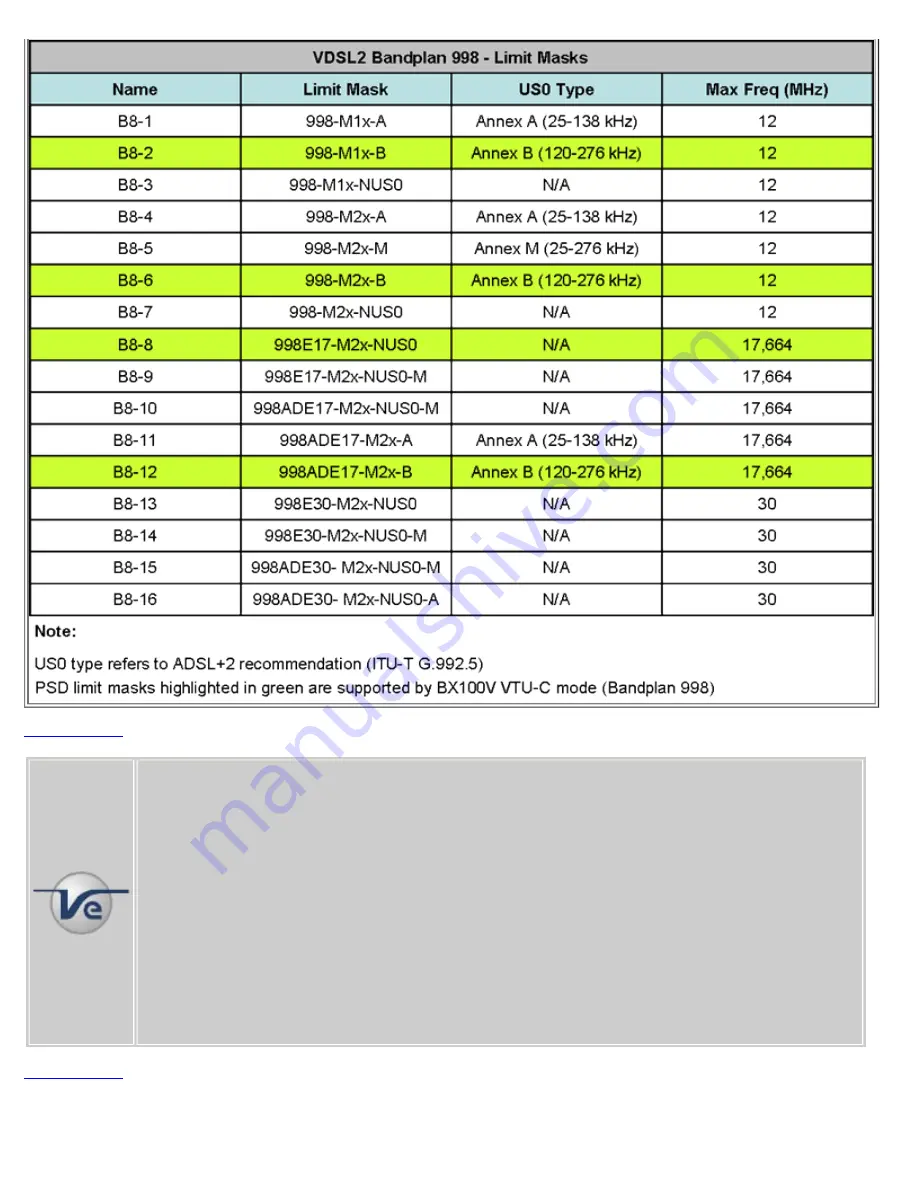
Note:
Annexes:
Similar to ADSL and ADSL2+, VDSL2 includes regional bandplan annexes that specify PSD
Masks which are designed to coexist with other services.
Annex A
specifies bandplans for the North
American and enables VDSL2 to be deployed with traditional POTS telephony.
Annex B
specifies
bandplans for Europe and enables VDSL2 deployment with underlying POTS and ISDN services.
Annex C
allows VDSL2 to coexist with TCM ISDN services, found primarily in Japan.
Bandplans:
VDSL2 is a true worldwide standard which has has numerous configuration profiles and
bandplans to meet regional service provider requirements. The frequency bandwidth has increased from 12
MHz to 30 MHz, with options for 8.5 MHz, 12 MHz, 17.7 MHz and 30 MHz spectrums.
The standard also defines asymmetric (Plan 998) and symmetric (Plan 997) bandplans for the transmission
of upstream and downstream signals.
Profiles:
To simplify configuring network equipment, the standard defines profiles tailored for different
regional deployment architectures. There are eight profiles which define power options, bandwidths and
minimum data rates for each profile. The profiles are depicted in the table below.
7.0 DSL Measurements Mode
BX100A/V e-Manual D07-00-001 Rev E01
Page 22 of 52






























